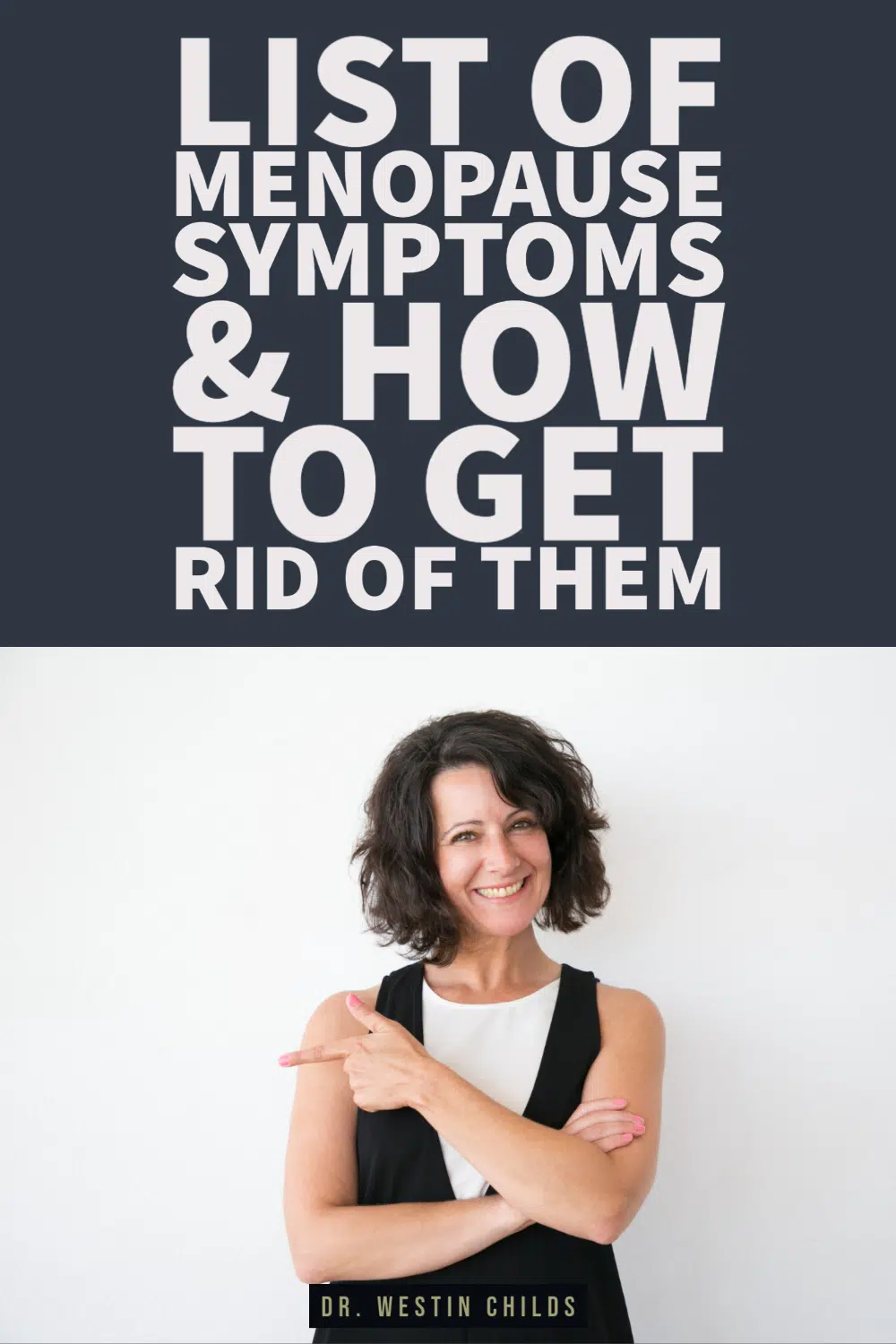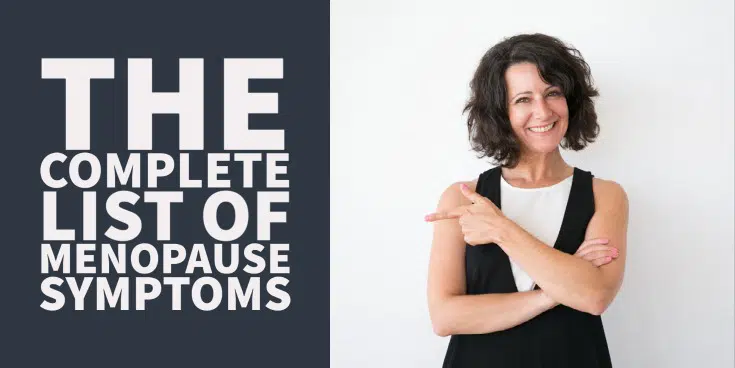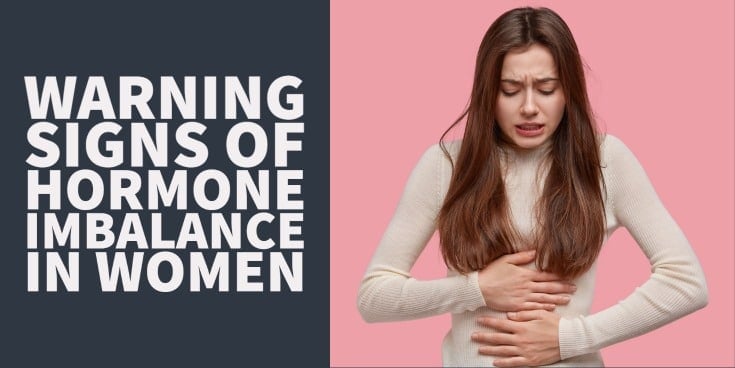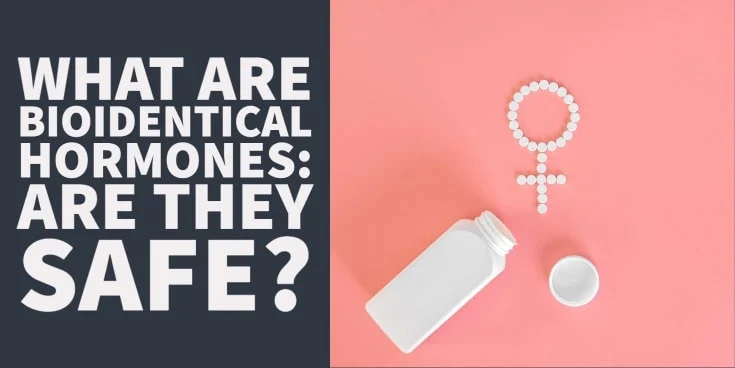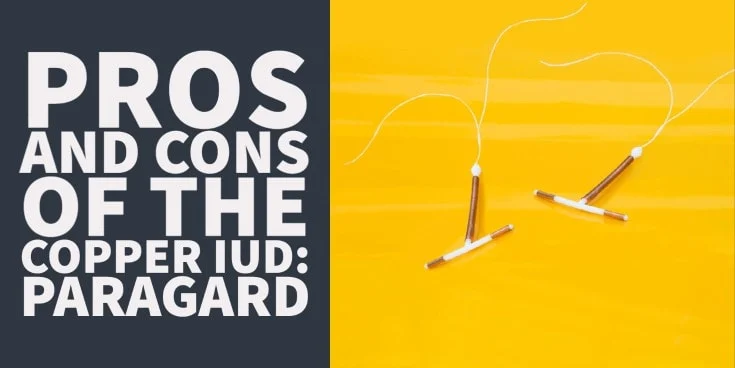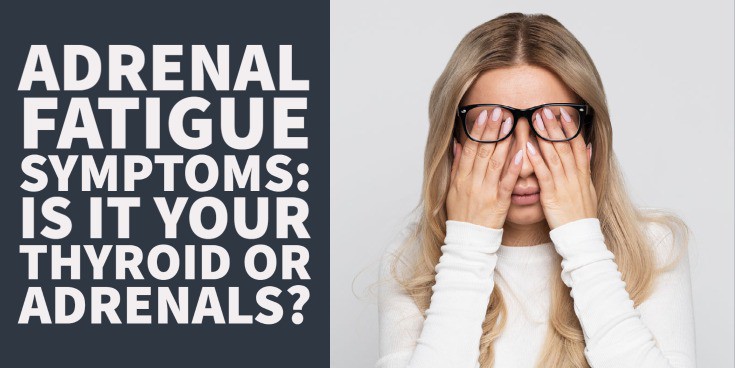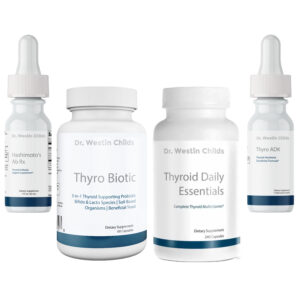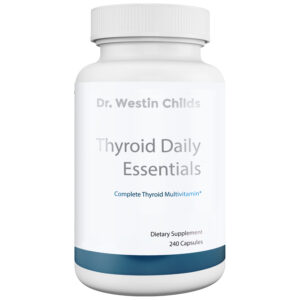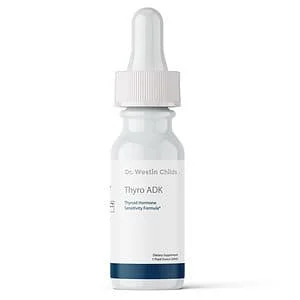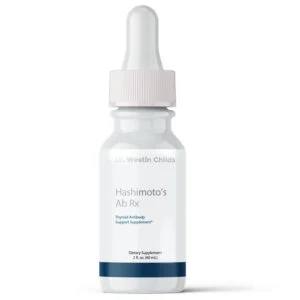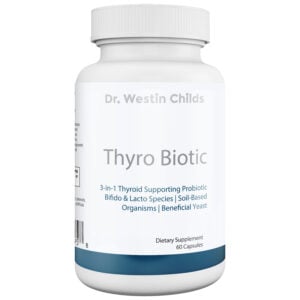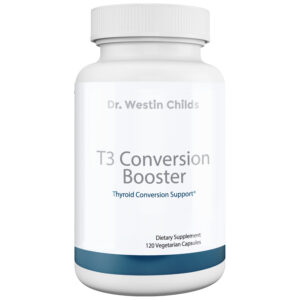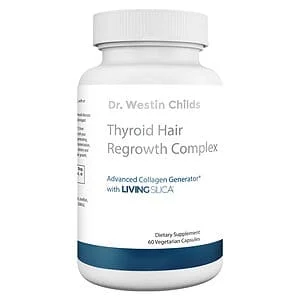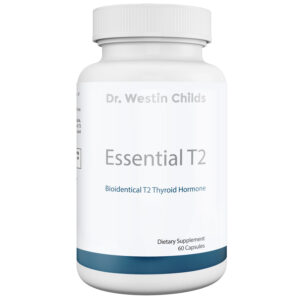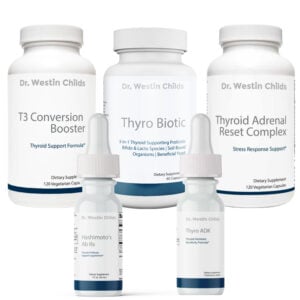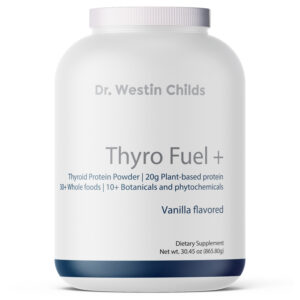What do hot flashes, fatigue, weight gain, and decreased sex drive all have in common?
They all may be the result of a condition known as menopause.
But these are not all of the symptoms associated with menopause.
Learn more about menopause symptoms including why they occur, which ones are most common, how to treat them and how to test to determine if you really are in menopause in this guide:
What is Menopause & What Causes it?
Menopause is a condition that ALL women will eventually have to deal with.
It is the result of ovarian failure to produce youthful levels of estrogen and progesterone (1).
Each woman has a finite amount of eggs that she is born with.
Each month (usually) an egg is “used up” during the ovulatory process.
Each month the total amount of eggs available declines.
Once the total amount of eggs reaches zero, she is unable to menstruate and menopause kicks in.
Menopause often results in rather dramatic symptoms which occur directly from the result of the withdrawal of estrogen and progesterone (2).
I referenced the word youthful in a previous sentence and that was by design.
Hormones, especially sex hormones, help manage very important processes in the body.
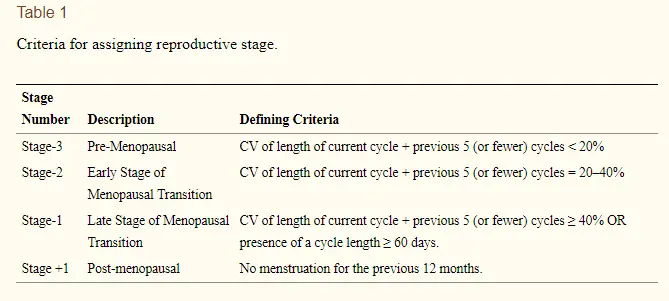
Processes such as the regulation of body weight, regulation of mood, regulation of sex drive, regulation of fertility, bone density, cardiac function, and so on.
The decline of these sex hormones in both men and women results in dramatic symptoms which can be attributed directly to the decline in hormones.
I keep mentioning the hormones because it is entirely possible to substitute or replace the lost hormones with a bio-identical version which can help manage the symptoms associated with this natural decline (3) (but more on that later).
Every year up to 1.5 MILLION women will transition from perimenopause into menopause.
That means that EVERY year 1.5 million women will have to deal with the symptoms associated with this condition.
This is no small number and it’s worth spending the time to talk about exactly what you will be experiencing.
Menopause will eventually occur as a result of time, pretty much no matter what.
But time is not the only cause of menopause either.
Surgical procedures, such as the removal of your ovaries (4), or certain medications, such as Arimidex (5), can completely shut off normal hormone patterns and result in what is known as premature menopause.
Regardless of how you reach it, the symptoms will often be the same.
So instead of focusing on the exact cause, it makes more sense to focus on the symptoms associated with the condition as well as the treatment.
With that in mind let’s jump into the symptoms…
The Most Common Symptoms of Menopause
It’s important to realize that each woman will present with slightly different symptoms when they enter menopause.
Some women may enter menopause and hardly have any difficulty with the transition while experiencing maybe some minor fatigue.
But why is this? Why is there so much discrepancy between individuals?
Much of this probably has to do with normal and innate differences in estrogen and progesterone levels.
Remember that the amount of estrogen (and progesterone) that you need to feel “optimal” is unique to your body.
This is why hormone replacement therapy cannot be standardized and requires a personalized approach.
It may be that some women experience only “small” drops of estrogen (those who have lower baseline levels of estrogen, to begin with) compared to some women who experience more dramatic swings in estrogen during menopause.
The more dramatic the drop in estrogen the more dramatic your symptoms.
Another reason that women may experience fewer menopausal symptoms has to do with baseline body fat and fat distribution.
Remember that the symptoms associated with menopause are caused by the abrupt withdrawal of estrogen from the ovaries.
But as your ovaries cease to produce estrogen, other areas of your body try to pick up the slack.
One area that attempts to do this is your fat cells.
Fat cells can turn testosterone into estrogen via a process known as aromatization (7).
The more fat cells you have the more estrogen you will produce.
Excess fat cells in the pre-menopausal woman may contribute to over-estrogen production (and estrogen dominance), but this same pathway may be protective against menopausal symptoms.
With all of these various factors at play, it isn’t difficult to see how some women may be hit harder by menopause when compared to others.
But how do these symptoms tend to present? How do you know you are in menopause?
The abrupt withdrawal of estrogen causes an array of changes that will affect the entire body (9).
Bones, brain tissue, fat cells, heart cells, and so on will all be affected by this change.
But some of these changes will be more noticeable than others.
In particular, there are 4 main areas that tend to be hit the hardest and are the most noticeable during menopause:
#1. Vasomotor Symptoms (hot flashes, night sweats, flushes, etc.)
Vasomotor symptoms are among the most common symptoms associated with menopause.
The term vasomotor is used to describe a series of symptoms such as hot flashes, night sweats, and flushes which all occur spontaneously and suddenly.
Believe it or not, the exact cause of these symptoms is not well understood!
These symptoms may be due to changes in cellular sensitivity to estrogen, changes in serotonin levels, or some other cause.
Hot flashes are present in up to 55% of women even before they experience menopause.
These vasomotor symptoms last an average of up to 5.2 years (10)!
They tend to occur spontaneously, may occur in the evening and or during sleep, and may occur several times per day.
During these episodes, your body will become flushed as blood flow increases to the surface of the skin.
These symptoms, because they are so uncomfortable, often lead patients to seek help.
The good news is that these symptoms can be completely controlled or eliminated with the use of hormone replacement therapy.
Providing the body with even small doses of estrogen (bio-identical) is enough to completely block these symptoms from popping up.
Even if you opt not to use hormone therapy for your vasomotor symptoms you should know that they will eventually fade over time.
But you may experience them off and on for up to 5.2 years before they stop completely.
#2. Vaginal changes (Vaginal dryness, pain with intercourse, and decreased libido)
Another important change that will occur during menopause is that of changes to the vaginal tissue.
The withdrawal of estrogen causes what is known as vaginal atrophy.
Estrogen naturally helps to keep the vaginal tissues healthy, moist and responsive to stimuli.
The withdrawal of estrogen causes them to atrophy (shrink) which may cause pain during intercourse, an increased risk of developing urinary tract infections, and cause vaginal pain.
Unlike vasomotor symptoms (which will resolve over time) these vaginal symptoms will NOT go away over time.
They are the direct result of reduced circulating estrogen in the body.
The good news is that you can “revive” vaginal tissues with the use of hormone replacement therapy (11).
Even if you don’t want to use systemic hormone therapy (such as a cream or gel) you can apply estrogen directly to your vagina to dramatically improve the tissues.
Topically placed estrogen (such as estrone) does not get absorbed into the entire system so the risk of negative systemic side effects is limited.
The use of topical estrogen is also sufficient to reduce the risk of recurrent urinary tract infections which can accompany vaginal atrophy.
It may be worth considering if you suffer from any of these vaginal side effects.
#3. Insomnia
Up to 50% of women who enter menopause report disturbance in the quality or duration of their sleep (12).
Sleep disturbances in menopause are probably caused by more than just one issue.
For instance:
It is well known that the quality of sleep tends to decline naturally with age (meaning the older you get the more likely you are to lose quality sleep).
But menopause adds another layer of complexity with hot flashes and night sweats.
It is not uncommon for women to wake up in the middle of the night (sometimes several times per night) due to changes in their body temperature or being drenched in sweat.
This is felt to be caused by hot flashes which occur during sleep and which are dramatic enough to wake the person up.
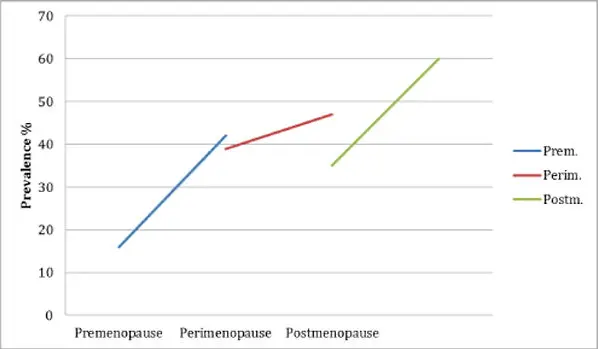
Unlike the other symptoms listed above, sleep may not necessarily improve with the use of hormone therapy.
If your sleep disturbance is due to hot flashes then estrogen therapy may help, but if it is due to a natural age-related decline in sleeping patterns, then hormone therapy will not help.
Managing your sleep is very important because sleep helps determine your mood and helps regulate your weight and sensitivity to other hormones.
#4. Mood changes
Women entering menopause are three times more likely to experience depression and anxiety (13).
Women already have an increased baseline risk of these conditions compared to men by a factor of two.
So when you combine menopause, this risk increases dramatically.
The exact cause of mood changes during menopause is not well understood, but it likely has to do with a combination of lack of sleep, estrogen changes, changes in body weight, changes in other hormone levels, and so on.
As an example:
Menopause may lead to hot flashes which lead to insomnia (lack of sleep), which leads to daytime fatigue, which then leads to issues at work or with relationships which then may lead to depression.
Depression, like insomnia, may not necessarily resolve with hormone replacement therapy.
Other Symptoms
The big 4 symptoms listed above are not the only symptoms of menopause.
In fact, estrogen withdrawal will affect other tissues in your body as well.
I’ve included a list of other symptoms which you may experience as you transition into menopause below:
- Weight gain (14) – Women gain up to 15 pounds on average during menopause.
- Hot flashes
- Reduced “glow” of the skin – Estrogen helps provide the “glow” to the skin that women experience (especially during pregnancy).
- Loss of subcutaneous fat (15) – Loss of subcutaneous fat deposits in the face and hands lead to “shrinking” of the skin. Topical estrogen can restore this fat and bring back a more youthful appearance.
- Increased skin wrinkling (16) – Estrogen is considered a youthful hormone and as it declines you will notice more wrinkles and age spots.
- Fatigue
- Decreased libido (17) – Vaginal dryness and pain during intercourse may reduce your libido or sex drive.
- Insomnia
- Joint pain
- Depression and/or anxiety (18)
- Bone loss (19) – Estrogen and progesterone help maintain bone strength and density, as estrogen declines during menopause you will be at increased risk of developing osteopenia and osteoporosis
- Increased risk of heart disease (20)
- Poor concentration
- Poor memory
- Increased risk of Dementia
- Hair loss or hair thinning
- Increased risk of developing urinary tract infections (21)
- Increased risk of developing incontinence
- Bloating or fluid retention
- Acne
Testing for Menopause
What if you are experiencing the symptoms but are not sure if you are in menopause?
Can you test for menopause using standard blood tests?
The answer is yes (22).
Most physicians don’t routinely test for menopause because they generally don’t treat it with bio-identical hormones, but there is definitely an easy way to test for menopause.
This may sound strange to you at first but it’s definitely the truth.
If you don’t plan on treating a condition then why do you care if someone has that condition?
It’s helpful for the patient to know and understand what is happening in their own body, but from the perspective of the physician, it’s not always felt to be important.
I strongly believe that you should be aware of your body and it’s very helpful to know if you are in menopause or not, which is why I’m discussing this post and how to test for it.
So how do you do it?
The best way to do this is by ordering a couple of standard hormones.
The following labs can be used to test if you are in menopause:
- FSH (follicle-stimulating hormone) – Perhaps the best way to diagnose menopause is to order the FSH test which stands for follicle-stimulating hormone. A high FSH, in the presence of menopausal symptoms, is usually sufficient to diagnose menopause. An FSH greater than 22.3 IU/l may be indicative of menopause (23).
- Estradiol – During menopause estrogen levels fall. The most potent and powerful estrogen in the body is estradiol (though there are others) and this value will DROP during menopause. Estrogen levels vary dramatically between individuals but look for a VERY low estrogen level as an indicator that you are in menopause.
- Progesterone – Progesterone, much like estrogen, will DECREASE during menopause. Look for a VERY low progesterone level as an indicator that you are in menopause.
See examples of labs that indicate progesterone below:

You can see in this example that the progesterone is 0.7 ng/mL which is less than 1.0 and VERY low.
The estradiol is so low that it cannot be measured and is referenced as being less than 15 pg/mL.
Women in menopause will often present with labs VERY similar to these.
In menopause several things happen:
#1. Your body stops ovulating and estrogen levels fall.
#2. This drop in estrogen causes FSH to rise (as your body tries to kick estrogen back into gear).
#3. Your ovaries don’t respond to FSH so estrogen levels and progesterone levels stay low while FSH levels stay high.
#4. FSH, estrogen, and progesterone can then be used to help diagnose what is happening in the body.
This series of events is helpful, but only if you are NOT currently taking hormone therapy!
Oral contraceptives (birth control pills) or bio-identical hormones will make these tests less helpful.
So only ask for these tests if you are NOT taking any hormones.
Perimenopause vs Menopause
What about perimenopause?
Perimenopause is considered to be the state which occurs PRIOR to menopause (24).
You can think about perimenopause as a condition that develops as your body progresses from menstruating to menopause.
Perimenopause is often associated with many symptoms, but these symptoms are not quite as intense when compared to the symptoms of menopause.
In perimenopause, the body is still producing SOME estrogen, but this estrogen is much less than what would be considered normal for the body.
During this period you may experience irregular periods, increased episodes of menstrual bleeding, and even minor symptoms of menopause off and on.
Remember:
Menopause kicks in when estrogen drops to near zero.
In perimenopause, your body is still producing SOME estrogen but it’s very sporadic and may occur in small doses or large doses off and on for many months.
Perimenopause can be differentiated from menopause in how it presents, how long it lasts, and the severity of symptoms.
Estrogen and progesterone levels will often be sporadic and inconsistently high and then low.
FSH will often be borderline high, but not quite in the menopausal range (as indicated above).
Symptoms of menopause may come and go in between menstrual cycles and as estrogen fluctuates.
As long as you are still having menstrual cycles you are NOT in menopause.
Perimenopause can be treated with smaller doses of hormones much like menopause.
Final Thoughts
Menopause is a state which all women will eventually experience.
This condition occurs as the female body ceases to ovulate and ceases to produce healthy and normal levels of estrogen and progesterone.
The symptoms associated with menopause can vary from mild to severe and potentially life-altering.
Estrogen has a powerful and potent influence on many cells in the body ranging from fat cells to brain cells to heart cells and so on.
Because of this wide-ranging action, you may experience symptoms such as fatigue, hot flashes, bone loss, depression, and weight gain during menopause.
Menopause can be treated with bio-identical hormone replacement therapy (meaning the use of natural hormones) which can completely eliminate and stop these symptoms.
Perimenopause is the condition that occurs immediately BEFORE menopause and it is often associated with minor menopausal symptoms which fluctuate for 6 to 12 months.
Testing for menopause can be accomplished by ordering FSH, progesterone, and estradiol levels.
Now I want to hear from you!
Are you suffering from the symptoms of menopause?
Are you currently getting treated?
Did treatment help reduce your symptoms?
Have you used natural therapies? Have they worked?
Leave your comments below!
